Memorable Pilgrimages:
I visited the Holy Land in February 2016, and my illustrated reflections on our trip appear here: -
Dani, our Tour Guide, was a delightful companion who was amazingly well-versed (literally!) in the Old and New Testaments, as well as in the wider history of Palestine and the Middle East, and who tried hard to be even-handed when talking about his country's recent political and security problems. We had a comfortable new coach, and our friendly Arab driver, Youssef, was experienced and also very knowledgeable. The other members of our 20+ Tour Group were not necessarily Christian or religious (some were openly sceptical) but they were friendly, respectful, and eager to learn, and we all got on well together.
There now follows a selection of pictures that represents most of the places we visited and the sights we saw, with captions that attempt no more than to give the location of each place, and its main context within the story of the Holy Land. At the end I will offer some personal reflections, as a committed Christian and keen geographer, on the wider significance of some of the places and events depicted. This is hopefully not just a collection of holiday snaps, nor is it a guide book, a theological tract, or an academic study; I hope that it will stimulate interest in this uniquely fascinating country, and give food for thought about its past, present and future.
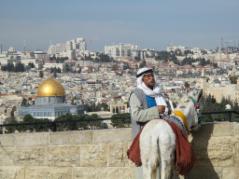
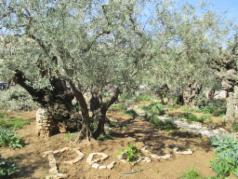
Jerusalem: Temple Mount and Dome of the Rock from Mt of Olives; Garden of Gethsemane
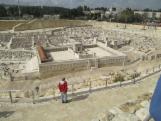
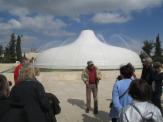
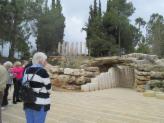 Giant model of 2ndC Jerusalem; Shrine of the Book (Dead Sea Scrolls); Children's Holocaust Memorial
Giant model of 2ndC Jerusalem; Shrine of the Book (Dead Sea Scrolls); Children's Holocaust Memorial

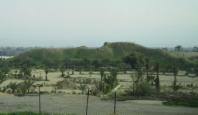
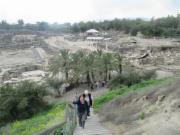
The Golden Gate The Tel at Jericho: world's oldest city? Roman city ruins of Be't Shan awaits the Messiah;
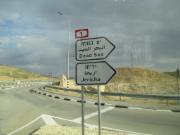
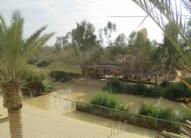
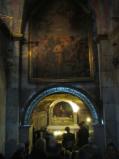
Desert road from Jerusalem to Jericho; River Jordan baptismal site; Church of the Annunciation
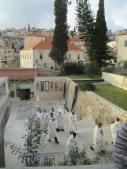
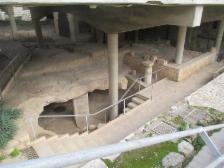
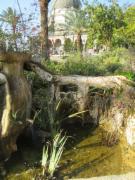
Procession for 'World Day of the Sick'; Nazareth houses from Mary's time; 'Beatitudes' Garden (Tabgha)
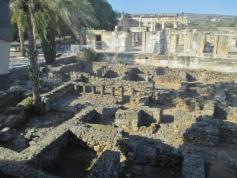
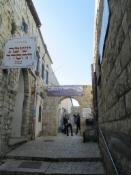
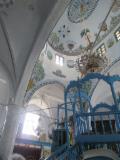
St Peter's Synagogue & Temple at Capernaum; Safed: medieval Kabbalah city + 17thC Synagogue

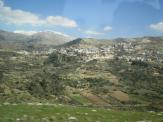
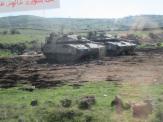
Banias Roman Temples at the Jordan springs; Druze village below snowy Mt Hermon; Israeli tanks in Golan
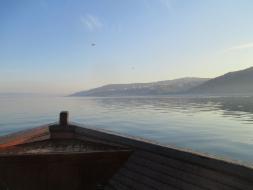
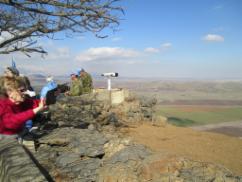
Evening boat trip from our kibbutz on Lake Galilee; I spy UN Peacekeepers on the Golan Heights!
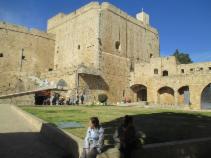
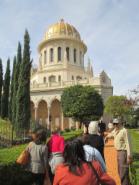
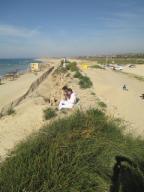 Crusader fortress at Akko (Acre); Ba'hai Shrine of the Bab, Haifa; Caesarea: Roman Aqueduct
Crusader fortress at Akko (Acre); Ba'hai Shrine of the Bab, Haifa; Caesarea: Roman Aqueduct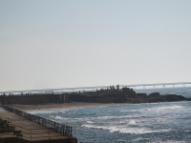
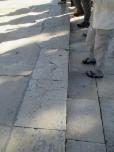
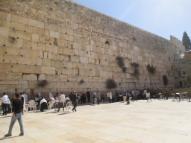 Herod's Palace at Caesarea Jerusalem: Steps to Solomon's The Western (Wailing) Wall: (also used by Pontius Pilate) Temple that Jesus often trod; we left a family prayer here
Herod's Palace at Caesarea Jerusalem: Steps to Solomon's The Western (Wailing) Wall: (also used by Pontius Pilate) Temple that Jesus often trod; we left a family prayer here 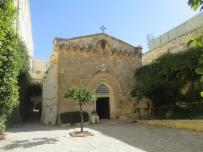
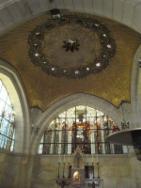
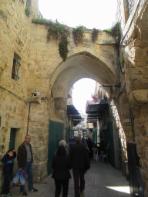
Stations of the Cross: Site of the Condemnation; Church of the Flagellation ' Ecce homo' arch on the (with Crown of Thorns); Via Dolorosa

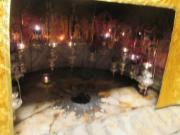
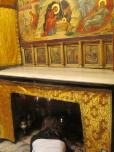
Church of the Nativity in Bethlehem; Traditional site of the Manger; Shrine of the Holy Rock

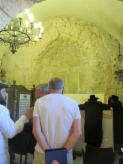
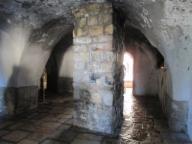
Mount Zion (Pentecost): Orthodox Jews at David's Tomb; the Upper Room (Last Supper)
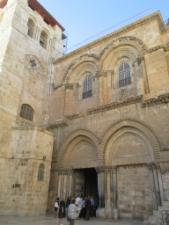
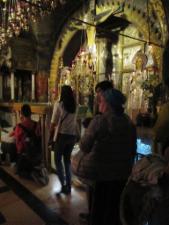
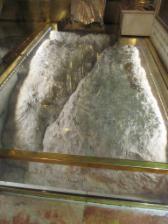
Church of the Holy Sepulchre; Calvary, Golgotha and the Empty Tomb; 'Rock of ages, cleft for me' (by the Good Friday earthquake)
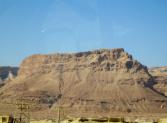
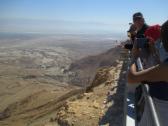
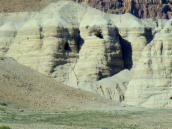
Masada mass suicide site AD69; Dead Sea from Masada summit; Qmran Caves (Dead Sea Scrolls)
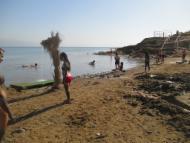
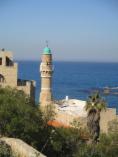
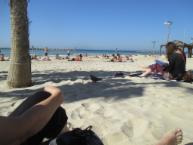
Mudded up for a bathe in the Dead Sea; we walked from Tel Aviv to Joppa; Tel Aviv beach in February!
Personal impressions, reflections and conclusions:
Please note that our visit was only to sites in the modern state of Israel, whereas the biblical Holy Land traditionally includes parts of the neighbouring countries of Jordan, Syria, and Lebanon, and even parts of modern Egypt, Iraq, and Saudi-Arabia.
1. Geographical: Israel is a small country, elongated from north to south and facing the easternmost shore of the Mediterranean Sea, at the meeting of three continents. It has always been an important cross-roads in what we westerners regard as the Near East. There is a surprising variety of landscapes and environments within it, with sharp regional and cultural boundaries, and this was well reflected in our tour itinerary:
a) the Mediterranean coastlands (including Tel Aviv, and the ports of Joppa, Haifa, and Acre) - these have always looked west towards Europe (and America);
b) the Jordan Rift Valley, the important north-south trade and migration corridor and the main fertile agricultural plain, which includes the shores of the Sea of Galilee where Jesus' teaching and healing were chronicled in the Gospels;
c) the limestone hill country of Judaea and Samaria (separating the two regions above), that includes Jerusalem, Nazareth, and Bethlehem, and also much of the West Bank territory focusing on the Arab towns of Nablus, Hebron and Ramallah (which we did not visit);
d) the northernmost region bordering Lebanon, that also includes the Golan Heights territory most recently acquired by Israel on the Syrian border in the north-east;
e) the desert regions of the south, that include the Judaean Desert leading to the Dead Sea and Jordan, the Negev that focuses on the Red Sea and Arabia, and the Gaza coastal strip that connects with Egypt and the Nile.
There are strong geographical and seasonal climate contrasts: summers are searingly hot and rainless; the short winter is cooler and rainier. From north to south and from west to east rainfall decreases and temperatures increase. Jerusalem and the hill country sometimes have frost and even snow ( 'in the bleak midwinter ...'); but February/March is a good time to visit the country, with many welcome signs of spring.
Agriculture is an important part of the economy, and there is an abundant year-round growing season for many crops. In the Jordan Valley particularly, two or three different crops can be grown in a year on the same plot. Cattle grazing and animal rearing (including horses, a Middle Eastern passion!) are mainly in Galilee and the wetter north; they are reliant on supplementary feeds when pasture dries up in the long hot summer. Sheep and goats are ubiquitous as they survive on the most meagre pasture, but there are no pigs, of course, for religious reasons.
Hill, riverside and springwater sites were usually chosen for inland settlements because they were cooler and better watered; coastal and lakeshore sites had the benefit of cooling breezes, with fish as an important additional food and source of income.
2. Religious: It is sobering to reflect on how many religious traditions are recorded, remembered, and celebrated here, and how many of them trace their ancestry back to Abraham:
a) from ancient Israelites and Hebrews wandering in the desert, via the Twelve Tribes of Israel in Canaan and the Promised Land, through the diaspora, and the Kaballah, Sephardic (Spanish) and Ashkenazy traditions, to modern radical, orthodox and reformed Judaism;
b) from the Prophet Mohammed through Mecca and Medina, Iraq and Arabia, through the Mamluks and Ottoman Empire to Sunni, Shia, and beyond;
c) from the early Judeo-Christian Church in Jerusalem, Damascus and Antioch, through hermitic and monastic cells, Byzantine, Eastern Orthodox and Roman Catholic medieval traditions to the Crusaders, the Jesuits and the Lutherans; and then via missionary activity to a worldwide plethora of Catholic and Protestant churches and splinter groups (including Celtic saints, the Anglican Communion, and Baptist, Reformed, and Evangelical Churches!). To all these we must add the Ethiopian, Coptic and Syrian Churches of Africa, and also the newer missionary churches of Asia and Oceania.
d) Nor should we forget other religious groups of influence in the area at times in the past, such as the Druze, Essenes, Graeco-Roman Temple worshippers, Mithraism, Zoroastranism, and latterly, the Ba'hai cult ... etc.
It is also sobering that we were following a tradition of pilgrimage stretching back nearly two thousand years, and, for Jews, at least a thousand years before that!
Churches, synagogues, mosques, and other sacred buildings are everywhere, each with their own devotees, liturgy, relics, and rules. Formal and informal processions, devotions and services are going on all around from sunrise to beyond sunset. In order to have peace and quiet for reflection and devotion, or even just to appreciate the beauty and ambience of the sacred places, careful planning and timing were necessary (and sometimes a deaf ear!). Even though Dani and Youssef were very good at all that, there were still some frustrations and disappointments, particularly at the most revered and busy sites, such as in the Church of the Nativity, along the Via Dolorosa (Stations of the Cross), at the Church of the Holy Sepulchre, and on the Dome of the Rock. In spite of the crowds, some of the sites and their associations were very moving: we could feel very close to the people, places and events from the distant past, especially where elements of the landscape of the time could be seen and experienced, such as in the Garden of Gethsemane, on the shores of Lake Galilee, within the Old City, on the banks of the River Jordan, at Jericho, and in the Judaean wilderness.
3. Historical: History, ancient and recent, must loom large in any consideration of modern Israel and the Holy Land. The long and deeply cherished history of settlement, coupled with shortage of suitable settlement sites, meant that there have been successive layers of building and rebuilding over many centuries (typified by the many Tells which are such a feature of the Middle Eastern landscape - notably that at Jericho, excavated by Dame Kathleen Kenyon) - often literally one on top of the other. Even modern housing, basilicas, museums, and commercial sites have often been built over the top of ancient settlements; but this was both bad and good news, since although there has been much 0ver-elaborate embellishment of some sites over the years, there has also been no obvious shortage of money or will for conservation (much of it from overseas), and much new and precious archaeology and information has come to light as a result.
Jerusalem is unique in so many ways, with the sharp contrast between its ancient, crowded Centre (which is itself subdivided largely on religious rather than functional grounds), and its very new suburbs. Joppa (Jaffa) used to be the main port of Israel, but it has been replaced by Haifa further north; Tel Aviv, Jaffa's near neighbour to the south, hardly existed 60 years ago, but is now the thrusting, modern second city; Jerusalem, Bethlehem and Nazareth have grown dramatically in the last few decades.
4. Social: I found local pe0ple were generally friendly and tolerant towards ubiquitous and sometimes very demanding visitors. They were also justifiably proud of their heritage, and also of what their country has achieved, but with very different emphasis according to which religious and ethnic community they came from. There is evidence of encouraging attempts at co-operation and collaboration between the communities.
All the tourist destinations were scrupulously clean, tidy, carefully preserved and well-looked after; even the poorest areas showed little signs of squalor.
5. Political: Young Jewish uniformed groups and individuals were prominent, some of them visibly moved: especially at the Western (or Wailing) Wall, at the site of the tragic Roman Siege of Masada, in the deeply distressing Holocaust Museum, and the Muslim Dome of the Rock (which was built on the sacred Jewish sites of Solomon's and Herod's Temples).
The security situation was rarely a major issue for us (and there were one or two potentially worrying incidents while we were there) - the presence of armed guards, police and army was reassuring rather than threatening, and nowadays we often experience these ourselves at tourist sites and airports both at home and abroad. I would subscribe to the view we heard expressed by an Israeli living in London that, as a tourist, one is probably safer in Israel than any other Middle Eastern country!
6. Concerns: a) Israel is a divided country in a politically (and geologically) very unstable region, which leads to uncertainty about the future, particularly amongst the younger generation. Israelis often seem to be looking back into the past, rather than forward into the future.
b) I couldn't help feeling that there is a strong siege mentality in both Jews and Arabs, manifest particularly in the harrowing Holocaust Museum, Masada, the Jewish settlements in the West Bank, and the new Security Fence that divides the Arab and Israeli communities.
c) Israel has few industrial resources; especially lacking are fossil fuels, water, and industrial minerals. It therefore has little manufacturing industry, and so has an unusual economy based on professional and service industries (including tourism), and the imported capital, intellect, skills and ingenuity of its people (many of whom are first or second generation immigrants from Europe, North America, and the neighbouring countries of the Middle East).
d) Environment: There are ongoing problems relating to the fair distribution of the water of the River Jordan - within the country's regions, between communities with different demands and priorities, and externally with its influential but increasingly frustrated eastern neighbour, the Hashimite Kingdom of Jordan. The accelerated shrinking of the Dead Sea in the south means that salinity is increasing, and the water table is lowering, such that sink holes and land subsidence are becoming more widespread, and oasis agriculture is under threat.
e) Demography: the Arab population is increasing very rapidly, and is traditionally rural and village based, while the Jewish population is more urban, grows more slowly, and has in the past been dependent on considerable in-migration, mainly from Europe.
There is an ongoing Bedouin problem; the Israeli authorities have been traditionally tolerant of these desert pastoralists, but their increasing numbers and semi-nomadic lifestyle puts increasing pressure on the environment, and on the provision of services such as education and health. Their young people are increasingly susceptible to social problems as they drift inevitably to the established villages and towns.
f) Security: Israel's borders are not likely to be stable in the medium or long term future, as we have seen in the recent past, and internationally there is an ongoing reliance on increasingly uncertain US and European support for the country's survival.
And what do Israelis think about the so-called Arab Spring, events in Syria (their north-east neighbour), and the recent US Presidential election?
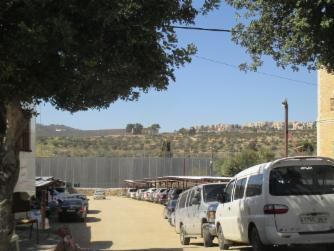
The Security Fence that controversially separates Arab Bethlehem in the foreground from the new Jewish settlement on the skyline.
. . . __ . . .
Other memorable Pilgrimages in previous years:
Assisi: Sept 2011
We drove to Assisi from San Benedetto with Jenny one day when we were holidaying on the Adriatic last autumn. It was a very busy day, and hot and tiring with the wheelchair, but it was memorable and uplifting, and Jenny was blessed wherever we went.
Hilltop site of the walled medieval city
San Rufino Cathedral Cathedral nave Statue of St Francis
Vaulted medieval alleyway Decorated vault off Piazza Comune Chiesa Nuova (Francis' Parish Church)
Cell where Francis was imprisoned Francis' Sanctuary - by his father!
Town Wall and Gate in Via Chiara Basilica S Chiara (St Clare)
Piazza & Basilica San Francesco Inferiore Francis overlooking Basilica Superiore (S Sagristo)
Anglican Communion in the Basilica Pushing Jenny up the steep Via Francesco
San Damiano Chapel (built by Francis) St Clare's Coretto (Choir) San Damiano Cloisters
Stole made for Francis as he neared death; St Francis praying among the rocks (Giotto)
. . . __ . . .
Lake Garda/Oberammergau June 2010:
St Stephens Parish Visit to northern Italy and southern Germany, where we enjoyed good Christian fellowship, visited enchanting fairytale castles and fascinating Venice, attended a memorable performance of 'Turandot' in the Roman Arena in Verona, walked amid wild Alpine flowers, and, above all, witnessed the spectacular and very moving Oberammergau Passion Play.
Limone del Garda harbour and cliffs; Limone from across L Garda; Riva-Torbole (head of L Garda)
Father Bernhard at makeshift altar; Lake Garda setting for dawn Eucharist; Compline by Hotel pool
Oberammergau village overview
Auditorium and stage with principals and chorus Last Supper
`The King of the Jews` The Crucifixion
. . . __ . . .
Walsingham 2008:
An earlier Parish Pilgrimage - to the Shrine of Our Lady of Walsingham in Norfolk
Pilgrims from St Stephens in procession Our Lady of Walsingham Lighting candles at the Shrine
Chapel Sanctuary Abbey West Front & site 0f the`Holy House` in the Crypt
. . . __ . . .
Parish Peregrinations and Perambulations 2007-8:
Carol's `Bell Appeal" (2007) My Parish "Walk in the Woods" (2008)
. . . __ . . .
Parish Visit to Westminster Abbey, Sept 2011:
Abbey West Front Memorial to 2othC Martyrs Abbey Cloisters at Evensong
. . . __ . . .